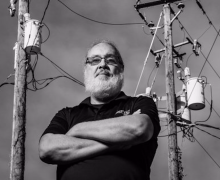Remote Havasupai Tribe Connects With Community Network
Rural tribal communities in the U.S. struggle with some of the worst connectivity in the country. Decades of neglect have put them even farther behind other rural communities, many of which are moving toward community networks rather than depending on national Internet access providers. The most isolated tribal community in the continental United States has chosen to shrink their disadvantages by establishing a community network.
Within the Canyon
The Havasupai Indian Reservation, home to about 600, is surrounded by the Grand Canyon National Park in Arizona. Having populated the region for centuries, the federal government restricted them to the reservation, an area of about 518 acres in Havasu Canyon, in 1882. Non-Indian ranchers, settlers, and miners started takng over the area in the 1870s and Executive Order confiscated the Havasupai homelands for public use. After the establishment of the Grand Canyon National Park and generations of persistence, the tribe finally won back more than 188,000 areas of plateau and canyon lands in 1975 through an Act of Congress.
The community, on the floor of the Grand Canyon, can only be reached by helicopter, or an 8-mile hike that starts 67 miles away from the nearest town. Mail is still delivered by mule.
Seeking Spectrum
That persistence is paying off again as the Havasupai Tribal Council focuses their attention on broadband access. They're collaborating with nonprofit MuralNet to connect the main residential area in Supai, where about 450 tribal members live. The nonprofit's mission is to assist tribes like the Havasupai develop infrastructure to obtain high-speed Internet access.




